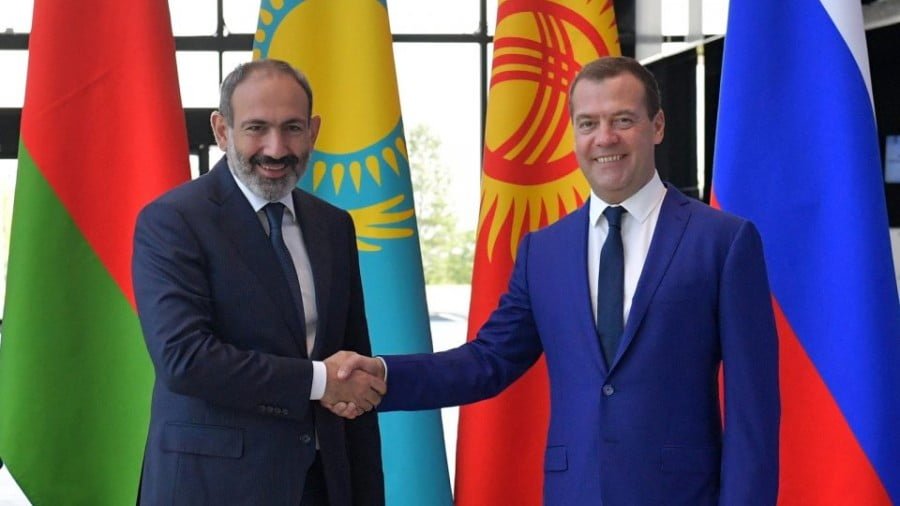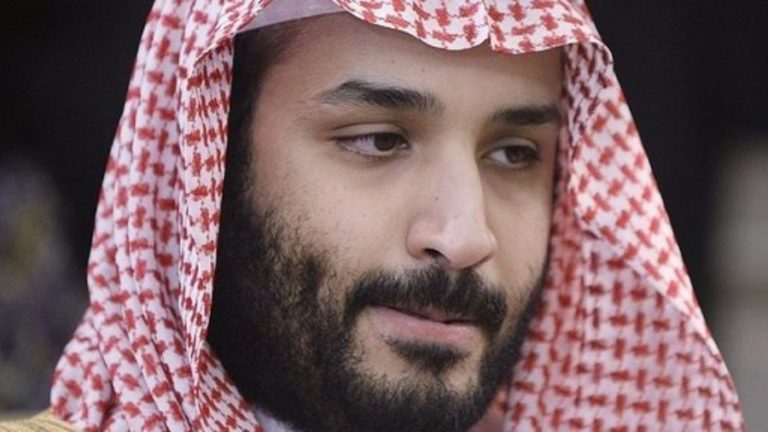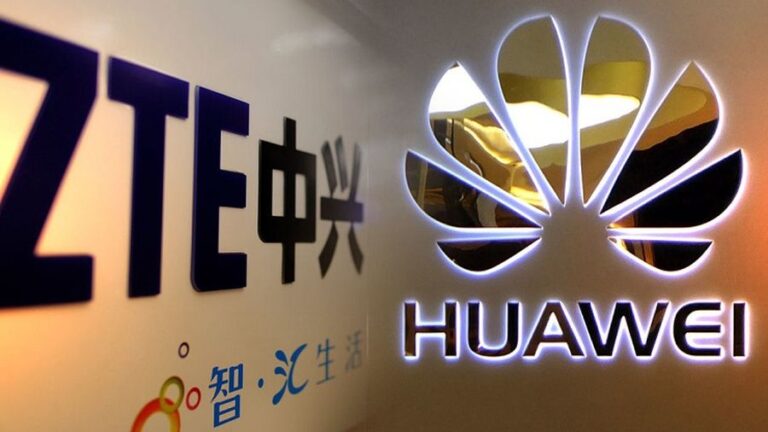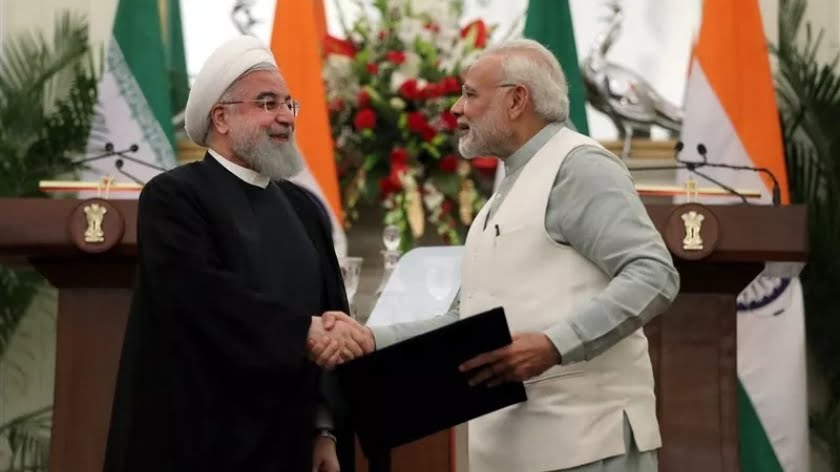Color Revolution in the Caucasus Rattles Russian Leaders
No two “color revolutions” have been the same, although the anatomy may bear similarity. This explains why Russia continues to face a problem in calibrating its response to emerging revolutionary tides in its backyard.
Russia fumbled in Georgia (2003) and Ukraine (2004 and 2014), but digested the ‘color revolutions’ in Kyrgyzstan in 2005 and 2010. Of course, circumstances were different: Kyrgyzstan is a landlocked country.
The Moscow elite’s eternal dilemma has been that, when the defining moment came, the West invariably injected geopolitics into color revolutions in the post-Soviet space in a concerted strategy to encircle Russia with an arc of hostile states.
In this complex backdrop of historical uncertainty, Russia is unsure whether it made an error of judgment apropos the “Velvet Revolution” in Armenia, which shot a 42-year-old former journalist and previously uninspiring opposition politician, Nikol Pashinyan, to power. After a meteoric three-week rise he became prime minister in May.
The Velvet Revolution bore traits of a color revolution – although traces of outside interference were indistinguishable. Even as Pashinyan rode the revolutionary wave, Moscow chose not to cast aspersions on his stated agenda, that cleaning up the Augean stables in his country was his sole objective and his mission had no foreign-policy overtones.
Moscow’s approach probably ended up helping him climb the ladders of power, with the entrenched ruling party in Armenia meekly stepping aside to make way for him as the new prime minister.
Pashinyan pledges loyalty
Moscow appeared to accept at face value Pashinyan’s pledges of fealty. President Vladimir Putin was the first foreign leader to congratulate Pashinyan on May 8 when the ruling party elected him as the new head of government in a parliamentary vote.
Putin said: “I hope that your performance as the head of government will contribute to efforts to further strengthen friendly, allied relations between our countries, partnership within the Commonwealth of Independent States, the Eurasian Economic Union and the Collective Security Treaty Organization.”
Pashinyan nicely played along. Indeed, his first face-to-face with Putin in Sochi, only six days later on the sidelines of the summit meeting of the Eurasian Economic Union (EEU), had an effusive tone.
Pashinyan thanked Putin for what he called Moscow’s “balanced position” during the color revolution and reassured the Kremlin of the immutability of the Armenian-Russian “strategic alliance”.
In the presence of reporters, he told Putin that “the strategic alliance relations between Armenia and Russia” required “no discussion” and “there is a consensus on this issue in Armenia. I think that nobody in our country has or will cast doubt on the strategic importance of Armenian-Russian relations.”
Russia maintains a military base in Armenia.
Putin wished him success and said he hoped that bilateral ties “will develop just as steadily as they have up to now.” Putin added that Russia “views Armenia as our closest partner and ally in the region” on both economic and security issues.”
Moscow confidantes targeted
One week into the Velvet Revolution, it all seemed as if the Russian-Armenian alliance couldn’t be in better shape. But then, the sky began getting overcast and a stillness began descending in the air.
On May 10, Pashinyan began what appeared as a shake-up of the administration. It quickly snowballed into a veritable purge aimed at systemic change. He also launched a crackdown on public corruption, which has since made him a cult figure.
In a matter of three months his administration caught up with the two ex-presidents, Robert Kocharyan and Serzh Sargsyan, and the influential mayor of Yerevan Taron Margaryan, who were all Moscow’s confidantes in Yerevan.
Then, on July 27, Pashinyan struck hard by implicating the incumbent Secretary-General of the Collective Security Treaty Organization (CSTO) Yuri Khachaturov on charges dating back to his past assignment as Chief of the General Staff of Armenia under Sargsyan. The general is presently based in Moscow as the head of the Russia-led alliance.
That was when Moscow sat up.
On July 31, Foreign Minister Sergei Lavrov said Moscow was “concerned” that Armenia’s new leadership was making politically motivated moves against former leaders. Lavrov said: “The events of the last few days… contradict the recent declarations of the new Armenian leadership that it was not planning to pursue its predecessors on political grounds.”
Lavrov added: “Moscow, as an ally of Yerevan, has always had an interest in the stability of the Armenian state, and therefore what is happening there must be of concern to us.”
He disclosed that Moscow had repeatedly raised its concerns with Yerevan and expected a “constructive” response. These remarks amount to a rebuke.
NATO outreach spurs Russian warning
Meanwhile, what probably rung alarm bells in Moscow was that Pashinyan also began making overtures to the North Atlantic Treaty Organization (NATO). On the sidelines of the alliance’s summit on July 12 in Brussels, to which he was invited, Pashinyan said: “It would be very useful if NATO will send a strong message to Azerbaijan that any attempt to solve the Nagorno-Karabakh conflict using force will meet a strong reaction from the international community.”
In effect, he invited the Western alliance to get involved in the Southern Caucasus, which Russia traditionally regards as its sphere of influence.
While in Brussels, Pashinyan met the leaders of Germany, France, Canada among others, apart from a having brief conversation with US President Donald Trump. Importantly, he began stressing the centrality of NATO as a forum for Armenia’s interactions with Georgia.
On August 2, the influential Moscow daily Kommersant wrote that Pashinyan’s moves had “driven a wedge into Moscow’s relations with Yerevan and may set the two countries at loggerheads even more”. The daily noted, citing Russian security officials, that the charges laid against CSTO Secretary General Khachaturov caused “outrage” in Moscow, because it “deals a blow to the image of the Russian-led military and political bloc”. It hinted at Western interference.
Equally, Moscow has taken exception to Armenia’s participation in the NATO exercises currently underway in Georgia. (Armenia is a member of the CSTO.)
In a hard-hitting statement on Friday, Russian Foreign Ministry spokesperson Maria Zakharova said the NATO exercise in Georgia aimed to “project power pressure, chiefly over South Ossetia, Abkhazia and Russia” and can only result in an “escalation of tensions.” Zakharova regretted that “Georgia’s neighboring countries are involved in these drills on various pretexts.”
On Monday, Russian Prime Minister Dmitry Medvedev said Georgia’s accession to NATO may trigger “a terrible conflict” and lead to catastrophic consequences. He closely echoed Putin’s stern warning last month: “We will respond proportionally to aggressive moves that pose a direct threat to Russia. Our [NATO] counterparts who bet on rising tensions, are trying to bring, say, Ukraine and Georgia into the alliance’s military orbit but they should think about the possible consequences of such an irresponsible policy.”
Clearly, Moscow’s preference would have been that Pashinyan pragmatically keeps Armenia in Russia’s orbit – and NATO out of the Caucasus. But the Velvet Revolution has mutated and Moscow’s dismal experience is that in such defining moments, environmental pressures cause changes to the genetic structure of color revolutions, resulting in variant DNA forms.







